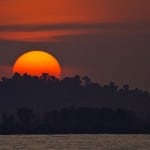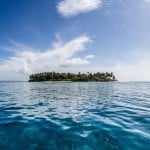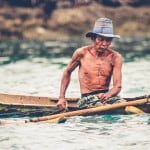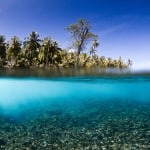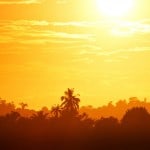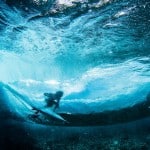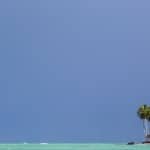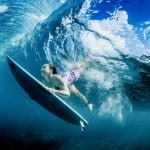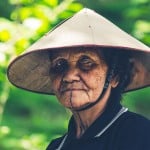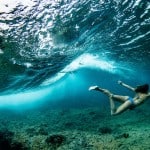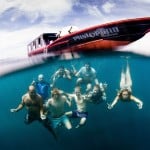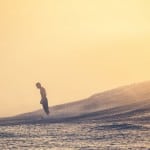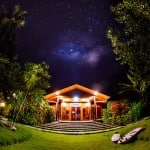Nyang Nyang island, home to Pitstop Hill, is largely an undeveloped island, populated only with a few small local villages. It stretches about 5km from end to end with hills in the interior and lush tropical vegetation running down to the shoreline, punctuated with white sand beaches and rocky headlands in some places. A maze of walking trails wind through the interior and around the island, used by the locals for moving between villages and between copra farming areas. Copra is a product harvested from the abundant coconut palms of the island, collected via local cargo boat and sent to processing facilities in Padang where it is converted into products such as soap and cooking oil. We use the walking trails for walking from Pitstops to the other four main breaks at our end of the island, favourite swimming beaches, and trying to spot the elusive Nyang Nyang deer in the island interior.
Our tropical climate is hot and humid, exactly what you want on a surf trip. The temperature generally ranges from 21-32°C or 70-90°F. The dry season extends from February – September and the wet season runs from October – January, but regular short bursts of rain can occur at any time, and on the other side of the coin, the wet season can still be dry and sunny for weeks at a time. The water is warm all year round, with the water temperature a consistent 27°C. Boardshorts (trunks) are all you’ll need, wetsuits are never necessary, but bring rash-vests or surf t-shirts and sunscreen for the heat of the day and don’t forget to bring plenty of tropical water surfboard wax.
The peak surf season runs from May to October with June to September generally receiving the biggest and most consistent swells. It’s during these months that the higher profile breaks (which tend to be those with grinding barrels over hundreds of metres) turn on consistently. But don’t be fooled, great waves can be found all year round, and thanks to some breaks being more swell exposed than others, and our proximity to the swell magnet waves like Nipussi and Burgerworld, your surfs in a low season trip should average at least head high, and you will be sharing them with very few other surfers. Local winds are variable throughout most of the year, but whenever you do decide to visit, there will be a wind and tide setup somewhere that will be working. Even on seemingly flat days, there’ll be a clean wave running down a reef somewhere nearby… and we’ll make sure you are right there.

